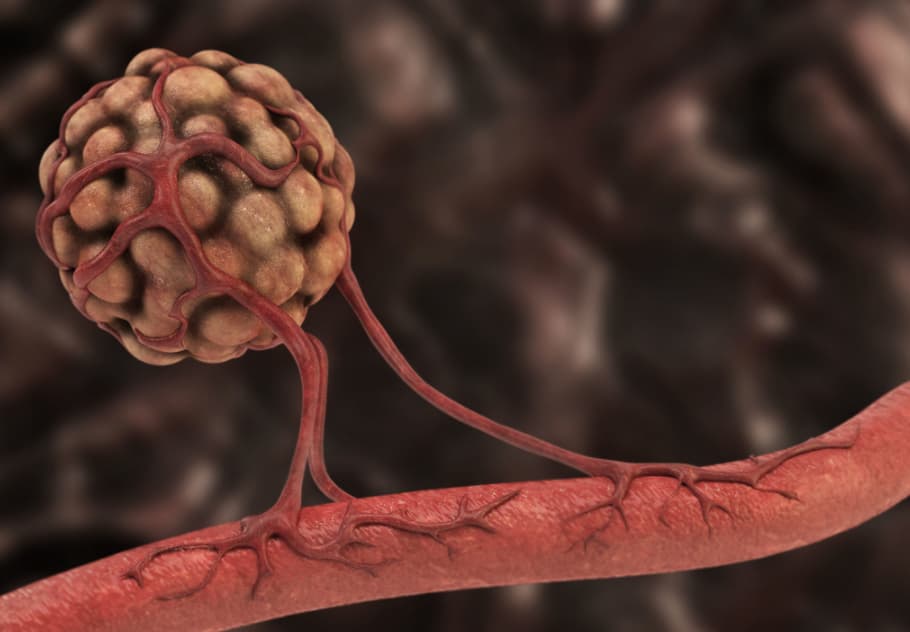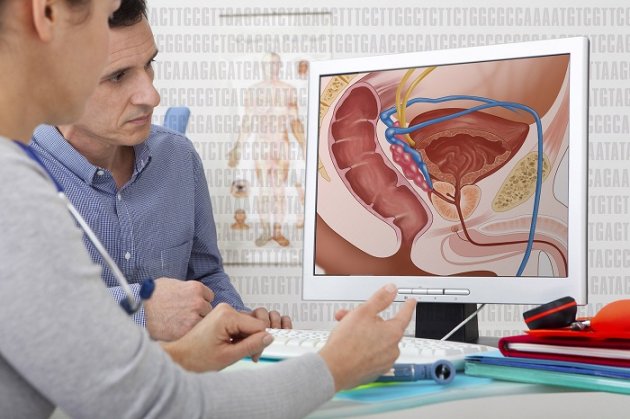The potential for developing cancer is frightening to everyone, and indeed the likelihood of it occurring is one in every third person on earth. Fortunately, with advances in medicine, and improved knowledge of nutrition and diet including anti angiogenesis foods, your odds of surviving it are now considerably higher than they have been just a couple of short years back.
Few people recognize that a great battle is happening in their own bodies between molecules attempting to provide those bacteria and molecules which are trying to protect them from it.
Anti Angiogenesis Foods

Each day tens of thousands of cells in the body are pressured to your pre-cancerous condition by carcinogens. If they are not repaired, a number of them will eventually become full-blown cancer tissues.
Is there anything that you can do to help avoid this? Truly, there are, among the most crucial things associated with your diet plan. It’s currently recognized that a class of vegetables known as cruciferous vegetables is beneficial in protecting one from developing cancer.
There are also other Anti Angiogenesis Foods that can help.
What is Angiogenesis?
Angiogenesis is the development of new blood vessels. This procedure requires the migration, growth, and differentiation of endothelial tissues, which line the interior wall of arteries.
The process of angiogenesis is controlled by chemical signals within the body. These signs can stimulate the repair of broken blood vessels as well as the creation of new blood vessels.
Below you will find anti angiogenesis food list that one can include in his or her diet after a physician consultation.
Importance of Angiogenesis in Cancer
Angiogenesis plays a crucial role in the rise and spread of cancer. A blood supply is essential for tumors to develop a far a few mm in size. Tumors can make this blood supply mold by giving away chemical signals which stimulate angiogenesis.
Tumors may also stimulate neighboring healthy cells to create angiogenesis signaling molecules. The following new blood vessels “suckle” growing tumors with enzymes and oxygen, permitting the cancer cells to attack neighboring tissue, transfer through the body, and also to produce new colonies of cancer cells, known as metastases.
Including an antiangiogenic diet along the prescribed line of treatment can help immensely to fight cancer.
Top 50 Anti Angiogenesis Foods List
Here are 50 foods that have shown anti-angiogenic properties:
- Blueberries
- Strawberries
- Raspberries
- Blackberries
- Cherries
- Oranges
- Grapefruit
- Lemons
- Apples
- Pineapple
- Papaya
- Tomatoes
- Carrots
- Bok choy
- Kale
- Broccoli
- Cauliflower
- Brussels sprouts
- Artichokes
- Garlic
- Onions
- Leeks
- Red Grapes
- Pumpkin
- Mushrooms
- Seaweed
- Turmeric
- Ginger
- Green Tea
- Pomegranate
- Walnuts
- Pistachios
- Almonds
- Dark Chocolate (70% cocoa and up)
- Olive Oil
- Tuna
- Salmon
- Mackerel
- Sardines
- Trout
- Soy Beans
- Tofu
- Spinach
- Cabbage
- Asparagus
- Sweet Potatoes
- Oats
- Whole Grains
- Red Wine (in moderation)
- Flax Seeds
Remember, variety and balance are essential in a healthy diet. While this list is a great starting point, it’s not exhaustive, and it’s always best to seek personalized advice from a healthcare professional. Anti-angiogenesis foods may provide added benefits, but they’re not a substitute for medical treatment or a balanced, nutritious diet.
What Facts Reveal About Angiogenesis Diet?
Now there’s a complete set of cancer therapies that prevent blood vessel development and are in use for cancers of the colon, liver, colon, breast, lung, thyroid, and brain. Many patients have already experienced complete or rebooting regression from tumors as a consequence of the drugs.
Dr. William Li, President, and Medical Director of the Angiogenesis Foundation, has conducted extensive research in angiogenesis-based medication, a new and comprehensive strategy for fighting infection using restoring the body’s innate ability to control. Medical therapies which either stimulate the development of new blood vessels or inhibit development are being put to the test with success.
Benefits of Anthropogenic Diet
Merging healthy eating together with these excellent anti-angiogenesis foods together with regular and proper exercise will provide quick and long-lasting outcomes of weight reduction.
The very long list of food products will enable fat people to rotate the things to consume, thus avoiding the boredom and frustration of not having the ability to have variety in food.
While utilizing these weight loss magical anti-angiogenesis foods list, the appetite and craving do not raise and in fact, get controlled. They are all organic and therefore naturally safe to use on an everyday basis. You may merely create them as an integral part of your favorite recipes!
How Anti Angiogenesis Foods Help to Prevent or Perhaps Cure the Cancer?
Your kitchen might be the first line of defense against cancer. No, we’re not recommending that you start swinging your frying pan at rogue cells, but rather explore the power of anti-angiogenesis foods. These foods can potentially be a powerful ally in preventing and maybe even combating cancer. However, before you overhaul your pantry, remember, while food is a powerful tool, it doesn’t replace professional medical advice. Always consult with your healthcare professional before making significant changes to your diet or treatment plan.
First things first, let’s talk about angiogenesis. This science word might sound like the title of a dystopian novel, but it’s a natural process in the body involving the formation of new blood vessels. While it’s essential for healing wounds and maintaining healthy organs, it has a dark side. Uncontrolled angiogenesis can feed and promote the growth of diseases, like cancer.
When it comes to cancer, angiogenesis turns into the villain of our story, supplying cancerous tumors with the nutrients and oxygen they need to grow and spread. It’s a bit like adding gasoline to a fire. However, here’s where our dietary heroes come into play.
Anti angiogenesis foods contain naturally occurring inhibitors that help block this process, essentially cutting off the tumor’s supply lines. It’s like canceling the delivery of that gasoline we mentioned. Examples of these foods include fruits such as berries and citrus fruits, leafy green veggies, garlic, turmeric, green tea, and even dark chocolate. And yes, you read that right. We’re giving you another reason to justify your love for dark chocolate.
Research in this area is still evolving, but some studies have suggested that regular consumption of these foods might help reduce the risk of developing cancer. Plus, these foods could potentially help slow the growth and spread of existing tumors.
So, can we all just munch on salads and kiss cancer goodbye? Unfortunately, it’s not that simple. While anti-angiogenesis foods have shown promise, they’re not a standalone cure. Think of them as a potential reinforcement to traditional cancer treatments like chemotherapy, surgery, or radiation.
Before you start heaping your plate with kale and blueberries, remember the golden rule of nutrition: balance is key. Our bodies need a variety of nutrients to function correctly, and no single food or group of foods can offer all the health benefits we need.
Finally, we’d like to repeat a gentle reminder: food is powerful, but it’s not a panacea. A diet rich in anti-angiogenesis foods could potentially help prevent or fight cancer, but it’s not a substitute for medical treatment. As always, it’s crucial to consult with your healthcare professional about the role of diet in your cancer prevention or treatment strategy.
To wrap up, remember that every time you sit down to a meal, you’re not just satisfying your hunger. You’re providing your body with the tools it needs to keep you healthy and strong. Now, isn’t that food for thought?




You must be logged in to post a comment.